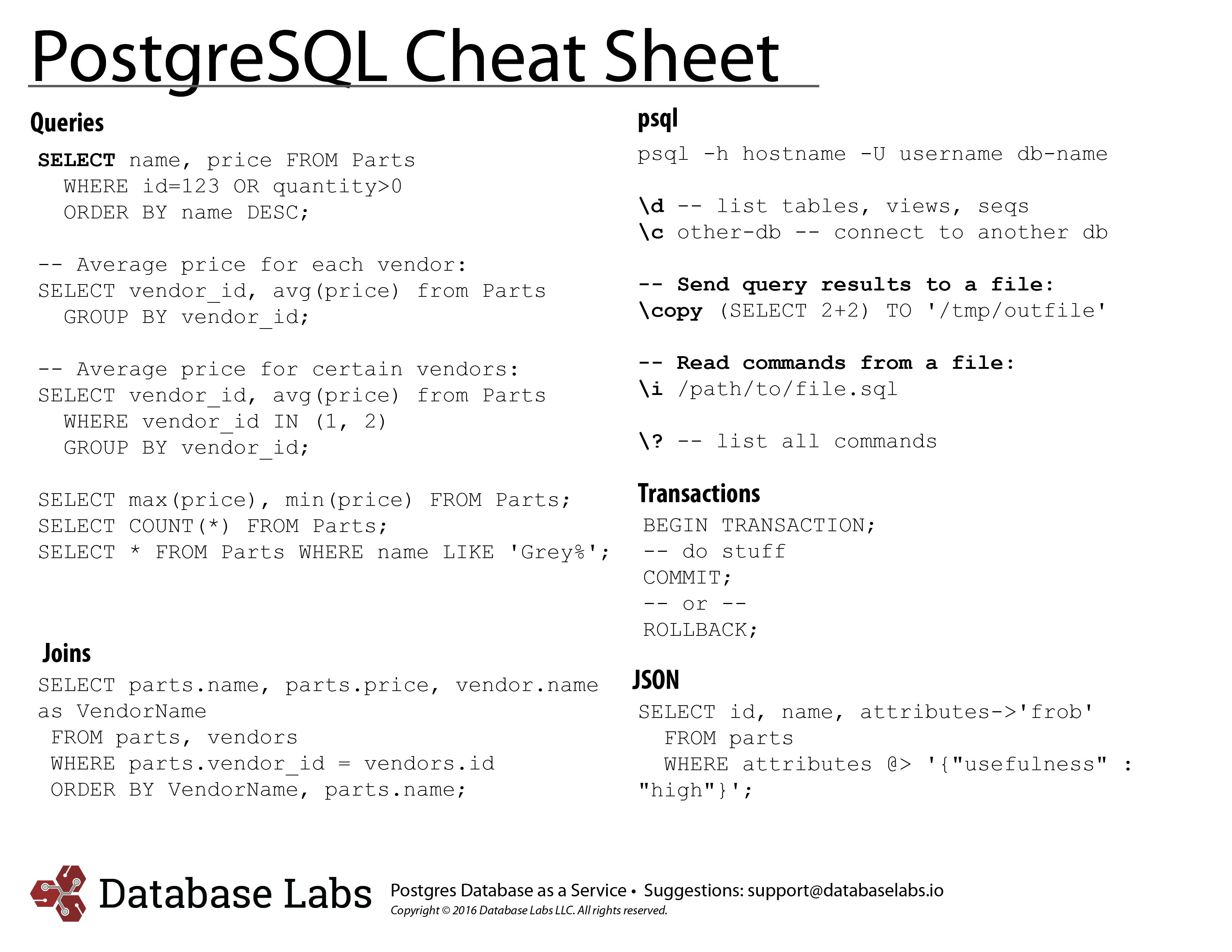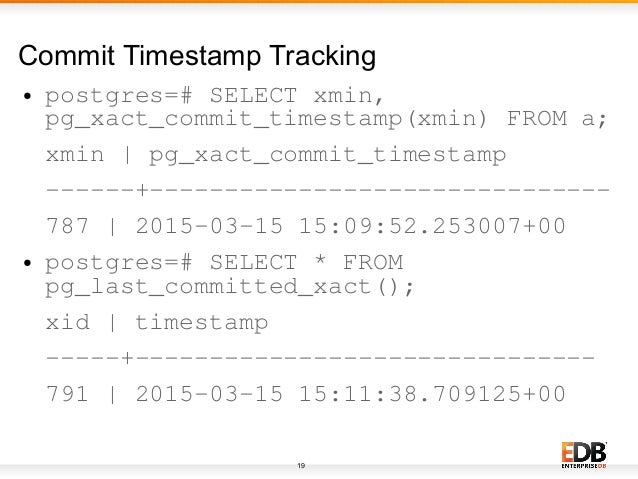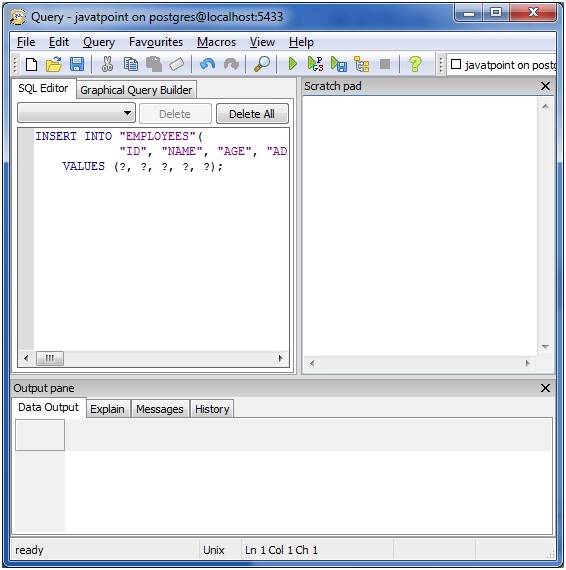
The DELETE command is used to delete row(s). It is always recommended to perform such operations under transaction blocks (i.e., BEGIN.COMMIT/ROLLBACK ), so we have the option to roll back the operation.
#Postgres if in select update
Postgres=# update dummy_table set age=30 where name='XYZ' returning age as age_no

Postgres=# update dummy_table set age=54,address='location-X' Ī RETURNING clause returns the updated rows. If we want to modify all the values in the address and age columns in dummy_table, then we do not need to use the WHERE clause. Postgres=# update dummy_table set name='GHI',age=54 where address='location-D' Next, we’ll use the UPDATE command to change the name and age of a person whose address is ‘location-D’: Postgres=# update dummy_table set age=50 where name='PQR' In the example below we use UPDATE to change the age of a person whose name is ‘PQR’: UPDATE is used to make updates to the data or row(s) of a database table. If we check the PostgreSQL documentation of the INSERT statement, its conformity to the SQL standard is discussed in the page’s Compatibility section:

Postgres=# insert into tyu values(1),(2) returning * īut to be compliant with the ANSI standard, all databases support commands (like DELETE, UPDATE, SELECT, INSERT) in the same way-that is, the syntax should work anywhere. For example, in PostgreSQL we can perform an INSERT operation using RETURNING clauses, which not all other databases can bin]$. SQL follows ANSI/ISO standards, but there are different versions of the SQL language used by different database systems. More information about the ANSI standard can be found on the SQL Wikipedia page. For each RDBMS to be compliant with the ANSI standard, they all have to support the major commands, like DML, in a similar manner as closely as possible.
#Postgres if in select how to
In this tutorial, you have learned how to use the PostgreSQL IN operator to check if a value matches any value in a list of values.The American National Standards Institute (ANSI) created a standard for SQL in 1986, and it was adopted by the International Organization for Standardization (ISO) in 1987.
#Postgres if in select code
ORDER BY customer_id Code language: SQL (Structured Query Language) ( sql )įor more information on the subquery, check it out the subquery tutorial. WHERE CAST (return_date AS DATE) = '' ORDER BY customer_id Code language: SQL (Structured Query Language) ( sql )īecause this query returns a list of values, you can use it as the input of the IN operator like this: SELECT The following query returns a list of customer ids from the rental table with the return date is : SELECT customer_id This query returns the same output as above query that use the NOT IN operator. Similar to the IN operator, you can use the not equal ( ) and AND operators to write the NOT IN operator: SELECTĬustomer_id 1 AND customer_id 2 Code language: SQL (Structured Query Language) ( sql ) SELECTĬustomer_id NOT IN ( 1, 2) Code language: SQL (Structured Query Language) ( sql ) You can combine the IN operator with the NOT operator to select rows whose values do not match the values in the list.įor example, the following statement finds all rentals with the customer id is not 1 or 2. In addition, PostgreSQL executes the query with the IN operator much faster than the same query that uses a list of OR operators. The query that uses the IN operator is shorter and more readable than the query that uses equal ( =) and OR operators. It is equivalent to the query above: SELECTĬustomer_id = 1 OR customer_id = 2 ORDER BY The following query uses the equal ( =) and OR operators instead of the IN operator. Return_date DESC Code language: SQL (Structured Query Language) ( sql ) Suppose you want to know the rental information of customer id 1 and 2, you can use the IN operator in the WHERE clause as follows: SELECT customer_id, Note that you will learn more about the subquery in the subsequent tutorial PostgreSQL IN operator examples

The query inside the parentheses is called a subquery, which is a query nested inside another query. The list of values can be a list of literal values such as numbers, strings or a result of a SELECT statement like this: value IN ( SELECT column_name FROM table_name) Code language: SQL (Structured Query Language) ( sql ) The IN operator returns true if the value matches any value in the list i.e., value1, value2, … The syntax of the IN operator is as follows: value IN (value1,value2.) Code language: SQL (Structured Query Language) ( sql ) You use IN operator in the WHERE clause to check if a value matches any value in a list of values. Summary: in this tutorial, you will learn how to use the PostgreSQL IN operator in the WHERE clause to check if a value matches any value in a list.


 0 kommentar(er)
0 kommentar(er)
